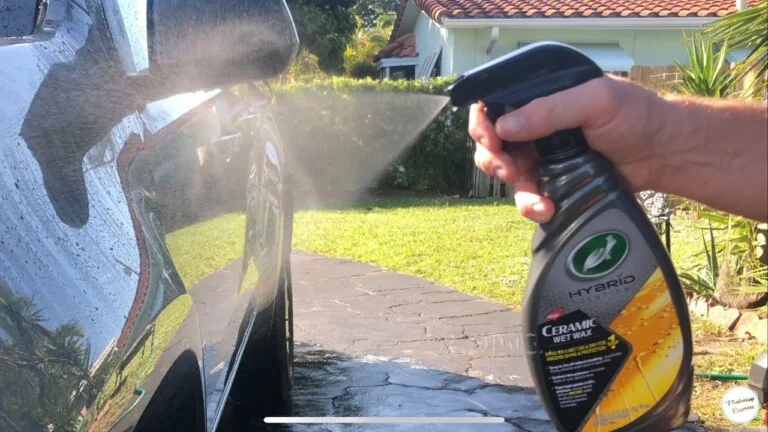what size c clamp for brakes
Introduction
When it comes to brakes, the size of the c clamp you need depends on the type of brake system you have. Generally, the larger the brake system, the larger the c clamp you will need. For example, if you have a disc brake system, you will need a larger c clamp than if you have a drum brake system. Additionally, the size of the c clamp you need will also depend on the size of the brake caliper and the size of the brake rotor. It is important to make sure you get the right size c clamp for your brakes to ensure proper performance and safety.
What Size C Clamp Is Needed for Brake Repairs?
When performing brake repairs, the size of C clamp needed will depend on the specific repair being done. Generally, a C clamp with a minimum capacity of 2 inches is recommended for most brake repairs. However, for larger brake repairs, a C clamp with a capacity of 3 inches or more may be necessary. It is important to select a C clamp with a capacity that is appropriate for the repair being done, as using a clamp that is too small may not provide adequate clamping force. Additionally, it is important to ensure that the C clamp is in good condition and free of any damage before use.
How to Choose the Right Size C Clamp for Brake Repairs
When it comes to brake repairs, having the right size C clamp is essential. The size of the C clamp you need will depend on the type of brake repair you are performing. It is important to select the correct size C clamp to ensure that the repair is done correctly and safely.
When selecting a C clamp for brake repairs, the first step is to determine the size of the brake caliper piston. This can be done by measuring the diameter of the piston with a caliper. Once you have the diameter of the piston, you can select a C clamp that is slightly larger than the piston diameter. This will ensure that the C clamp is able to fit securely around the piston.
The next step is to select a C clamp with the right amount of clamping force. The clamping force should be sufficient to compress the brake caliper piston, but not so much that it damages the piston or the brake system. Generally, a C clamp with a clamping force of between 500 and 1000 pounds per square inch (psi) is sufficient for most brake repairs.
Finally, it is important to select a C clamp that is made from a durable material. C clamps made from steel or aluminum are the most durable and will last for many years.
By following these steps, you can ensure that you select the right size C clamp for your brake repairs. This will help to ensure that the repair is done correctly and safely.
What Are the Benefits of Using a C Clamp for Brake Repairs?
Using a C Clamp for brake repairs is a common and effective method for repairing brakes. This type of clamp is designed to provide a secure hold on the brake caliper, allowing for a safe and efficient repair. There are several benefits to using a C Clamp for brake repairs.
First, C Clamps are easy to use and require minimal effort to install. The clamp is designed to fit around the brake caliper, and the user simply needs to tighten the clamp to secure it in place. This makes the installation process quick and easy, allowing for a faster repair.
Second, C Clamps provide a secure hold on the brake caliper. This ensures that the brake caliper is held firmly in place during the repair process, reducing the risk of any damage occurring.
Third, C Clamps are relatively inexpensive and can be purchased from most automotive stores. This makes them an affordable option for those looking to repair their brakes.
Finally, C Clamps are durable and can be used multiple times. This makes them a cost-effective option for those who need to repair their brakes on a regular basis.
Overall, using a C Clamp for brake repairs is an effective and efficient method for repairing brakes. The clamp is easy to use, provides a secure hold on the brake caliper, is relatively inexpensive, and is durable enough to be used multiple times.
What Are the Different Types of C Clamps Used for Brake Repairs?
When it comes to brake repairs, C clamps are an essential tool. C clamps are used to hold brake components in place while repairs are being made. There are several different types of C clamps that can be used for brake repairs, each with its own unique purpose.
The most common type of C clamp used for brake repairs is the standard C clamp. This type of clamp is designed to hold brake components in place while repairs are being made. It is typically made of steel and has a threaded screw that can be adjusted to fit the size of the component being repaired.
Another type of C clamp used for brake repairs is the adjustable C clamp. This type of clamp is designed to be adjustable so that it can fit a variety of different brake components. It is typically made of aluminum and has a threaded screw that can be adjusted to fit the size of the component being repaired.
The third type of C clamp used for brake repairs is the locking C clamp. This type of clamp is designed to lock in place once it is tightened. It is typically made of steel and has a threaded screw that can be adjusted to fit the size of the component being repaired.
Finally, the fourth type of C clamp used for brake repairs is the quick-release C clamp. This type of clamp is designed to be quickly released once it is tightened. It is typically made of aluminum and has a threaded screw that can be adjusted to fit the size of the component being repaired.
No matter which type of C clamp is used for brake repairs, it is important to ensure that it is properly tightened and secured before any repairs are made. This will help to ensure that the repairs are done correctly and safely.
How to Properly Install a C Clamp for Brake Repairs
Installing a C clamp is an important step in brake repairs. It is important to ensure that the C clamp is properly installed to ensure the brakes are working correctly and safely. This guide will provide step-by-step instructions on how to properly install a C clamp for brake repairs.
Step 1: Prepare the C Clamp
Before installing the C clamp, it is important to ensure that it is in good condition. Check for any signs of wear or damage, and replace the C clamp if necessary.
Step 2: Position the C Clamp
Position the C clamp on the brake caliper so that the open end of the C clamp is facing the brake pad. Make sure that the C clamp is centered on the brake caliper.
Step 3: Secure the C Clamp
Secure the C clamp in place by tightening the bolts on either side of the C clamp. Make sure that the bolts are tightened securely, but not too tightly.
Step 4: Test the C Clamp
Once the C clamp is installed, it is important to test it to make sure it is working properly. Apply pressure to the brake pedal and check to make sure that the C clamp is securely in place.
By following these steps, you can ensure that the C clamp is properly installed for brake repairs. It is important to make sure that the C clamp is in good condition and securely installed to ensure the brakes are working correctly and safely.
What Are the Safety Precautions to Consider When Using a C Clamp for Brake Repairs?
When using a C Clamp for brake repairs, it is important to take certain safety precautions to ensure the safety of yourself and others.
First, make sure that the C Clamp is the correct size for the job. If the C Clamp is too small, it may not be able to provide enough pressure to properly secure the brake components. If the C Clamp is too large, it may cause damage to the brake components.
Second, always wear protective gear when using a C Clamp. This includes safety glasses, gloves, and a face mask. This will help protect you from any debris that may be created during the repair process.
Third, make sure that the C Clamp is securely attached to the brake components. If the C Clamp is not properly secured, it may come loose during the repair process, which could cause serious injury.
Fourth, always use a torque wrench when tightening the C Clamp. This will ensure that the C Clamp is tightened to the correct torque setting.
Finally, always inspect the C Clamp after the repair is complete. Make sure that the C Clamp is not damaged or worn, and that it is securely attached to the brake components.
By following these safety precautions, you can ensure that your brake repairs are done safely and correctly.
How to Maintain a C Clamp for Brake Repairs
C-clamps are an essential tool for brake repairs, as they are used to hold brake components in place while repairs are being made. To ensure that your C-clamp is in good working condition, it is important to maintain it properly. Here are some tips for maintaining a C-clamp for brake repairs:
1. Clean the C-clamp regularly. Use a soft cloth and a mild detergent to wipe away any dirt or debris that has accumulated on the clamp. This will help to prevent rust and corrosion from forming.
2. Inspect the C-clamp for any signs of wear or damage. If any parts of the clamp are worn or damaged, they should be replaced immediately.
3. Lubricate the C-clamp regularly. Use a light lubricant, such as WD-40, to lubricate the moving parts of the clamp. This will help to ensure that the clamp operates smoothly and efficiently.
4. Store the C-clamp in a dry place. Moisture can cause rust and corrosion, so it is important to store the clamp in a dry place when not in use.
By following these tips, you can ensure that your C-clamp is in good working condition and ready to use for brake repairs.
What Are the Common Problems Associated with Using a C Clamp for Brake Repairs?
When using a C clamp for brake repairs, there are several common problems that can arise. Firstly, the C clamp may not be able to generate enough pressure to properly compress the brake caliper piston. This can lead to an inadequate brake repair, resulting in reduced braking performance. Secondly, the C clamp may not be able to reach the brake caliper piston due to its size and shape. This can lead to an incomplete brake repair, resulting in further reduced braking performance. Thirdly, the C clamp may not be able to generate enough torque to properly tighten the brake caliper bolts. This can lead to an inadequate brake repair, resulting in reduced braking performance. Finally, the C clamp may not be able to generate enough force to properly compress the brake caliper piston. This can lead to an incomplete brake repair, resulting in further reduced braking performance.
Q&A
1. What size C-clamp should I use for brakes?
The size of C-clamp you should use for brakes depends on the size of the brake caliper. Generally, a 3/4 inch C-clamp is suitable for most brake calipers. However, it is best to consult your vehicle’s manual or a professional mechanic to determine the correct size for your specific vehicle.
2. What is the purpose of a C-clamp for brakes?
A C-clamp is used to compress the brake caliper piston in order to make room for new brake pads. This is necessary when replacing brake pads or performing other brake maintenance.
3. How do I install a C-clamp for brakes?
To install a C-clamp for brakes, first make sure the brake caliper is in the open position. Then, place the C-clamp over the brake caliper piston and tighten it until the piston is compressed. Finally, remove the C-clamp and install the new brake pads.
4. What should I do if the C-clamp is too small for my brakes?
If the C-clamp is too small for your brakes, you should purchase a larger size. It is important to use the correct size C-clamp for your brakes in order to ensure proper installation and performance.
5. What should I do if the C-clamp is too large for my brakes?
If the C-clamp is too large for your brakes, you should purchase a smaller size. It is important to use the correct size C-clamp for your brakes in order to ensure proper installation and performance.
6. Is it safe to use a C-clamp for brakes?
Yes, it is safe to use a C-clamp for brakes as long as you use the correct size for your vehicle. It is important to follow the instructions in your vehicle’s manual or consult a professional mechanic to ensure proper installation and performance.
7. How often should I replace my C-clamp for brakes?
You should replace your C-clamp for brakes when it becomes worn or damaged. It is important to use the correct size C-clamp for your brakes in order to ensure proper installation and performance.
8. Are there any special precautions I should take when using a C-clamp for brakes?
Yes, it is important to take special precautions when using a C-clamp for brakes. Make sure the C-clamp is the correct size for your vehicle and that it is properly tightened. Additionally, make sure to wear protective gloves and eye protection when working with a C-clamp.
Conclusion
In conclusion, the size of c clamp for brakes depends on the size of the brake caliper and the type of brake system. Generally, a 3/4 inch c clamp is suitable for most brake systems, but it is important to check the manufacturer’s specifications to ensure the correct size is used.






